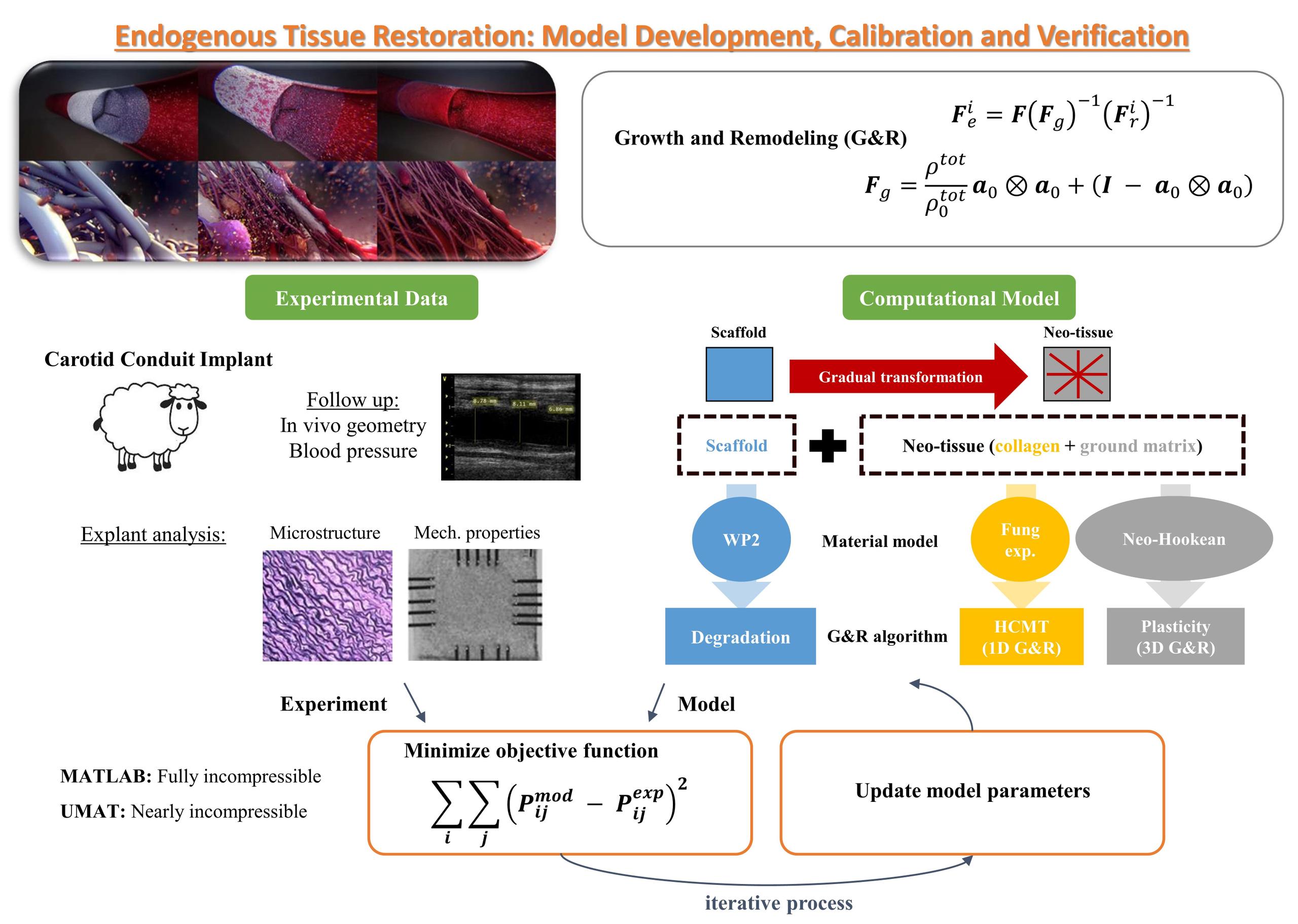Modelling the Growth and Remodeling (G&R) of the Endogenous Tissue Restoration (ETR) In Xeltis Biodegradable Device
At KU Leuven, collaborated with EMSE, an established framework was successfully implemented to analytically and numerically model the growth and remodeling (G&R) of the Endogenous Tissue Restoration (ETR) process for the Xeltis biodegradable carotid conduit device. Through the translation of the ETR process from Animal Trials (AT) into a computational model, a gradual replacement and adaptation of neo-tissue, including collagen fibers, smooth muscle cells (SMCs), and 3D connective tissue versus scaffold degradation, was modeled. This process was driven by mechano-mediated (induced by stress) and immune-mediated (arising from the inflammatory response) mechanisms within the ETR process. The material model of the scaffold was also defined using the constitutive model developed by WP02 at TU Graz. Utilizing Animal Trial (AT) data from WP06 for calibration, the model's parameters were perfectly tuned. Notably, a perfect alignment was observed between the results of the analytical study and the Finite Element (FE) simulation at this stage, signifying the successful verification of the model implementation.
In the subsequent phase of WP05, Fluid-Structure Interaction (FSI) will be integrated with G&R. FSI will contribute to ETR modeling by introducing Wall Shear Stress (WSS) as a key driver in mechano-mediated mass turnover updates. Additionally, we will conduct parameter sensitivity analysis and uncertainty quantification. Finally, we aim to validate our model using data obtained from AT, ensuring its robustness in predicting the intricate dynamics of the ETR process.

